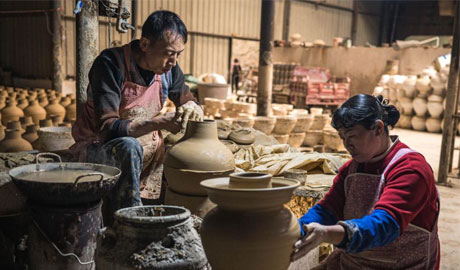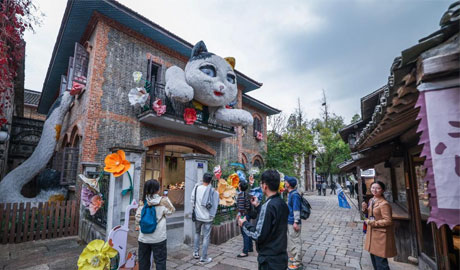

CHANGSHA, Dec. 27 (Xinhua) -- Archaeologists have unearthed 14 tombs dating back to a period spanning from the Eastern Han Dynasty (25-220) to Ming Dynasty (1368-1644) in central China's Hunan Province.
They belong to a tomb complex in Anren County in the city of Chenzhou, and the excavation work started in September, according to the Hunan Provincial Institute of Cultural Heritage and Archaeology.
The tombs are of two types: brick chamber tombs and earth pits. Archaeologists found a thin layer of sand in some pits, which is believed to be related to the gender of the tomb owners, said Chen Bin, head of the tomb complex excavation project.
More than 150 burial objects, including pottery, ironware, bronze ware and stone ornaments, were unearthed in the tombs.
Judging from the size of the tombs and the artifacts buried there, Chen said the 14 tombs were probably owned by ordinary civilians. Eleven of them can be traced back to the middle and late periods of the Eastern Han Dynasty.
"The new discoveries can provide important clues for the study of funeral customs, history and culture, and social-economic development of the dynasty in today's Anren County and surrounding areas," said Chen. ■

Xinjiang launches consumption voucher program to boost winter tourism

Liaohu Village of China's Yunnan boasts thousand-year pottery-making tradition

Yading scenic spot in China's Sichuan in best viewing season

Internet life carnival kicks off in Tongxiang City, China's Zhejiang

In pics: drifting ice in Jiayin section of China's Heilongjiang River
点击右上角![]() 微信好友
微信好友
 朋友圈
朋友圈

请使用浏览器分享功能进行分享
